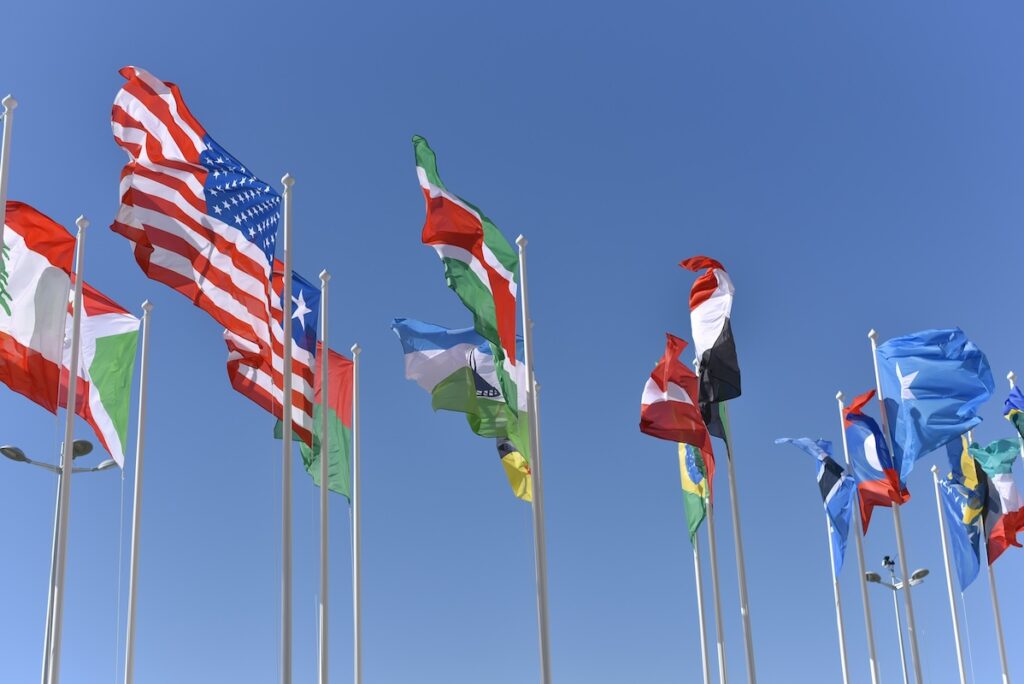US Social Security Agreements: Do You Need a Certificate of Coverage?
May 7, 2025 | Double Taxation, Retirement, Social Security | 5 minute read
Expat Tax Blog. Tax Tips for US Americans abroad.
Updated August 6, 2025
 All blogs are verified by Enrolled Agents and CPAs
All blogs are verified by Enrolled Agents and CPAs
Updated August 6, 2025
If you’re a US citizen working abroad, you’ve probably discovered that international tax rules can get complicated, especially when it comes to Social Security contributions. A certificate of coverage helps you avoid paying into two systems at the same time. Let’s break down what this is, why it matters, and how you can get one.
A certificate of coverage is an official document that proves you’re paying into one country’s Social Security system, so you don’t have to pay into another—the country you’re paying into issues the certificate. If you contribute to the US system, the Social Security Administration (SSA) provides it. If you’re paying into a foreign system instead, that country’s relevant authority handles it.
The goal of this certificate is to prevent double Social Security contributions, so you’re not paying into two retirement systems for the same work. Without a certificate, you might end up overpaying into a second social system unnecessarily. This can be costly—especially in countries with high contribution rates. A certificate of coverage is particularly important for employees on international assignments or self-employed US citizens working abroad.
The certificate of coverage is only available if there is a Social Security agreement, also known as a totalization agreement, between the US and the country where you’re working.
Countries Covered by Totalization Agreements
Not all countries have a totalization agreement with the US, so a certificate of coverage isn’t always available. As of 2025, the US has agreements with over 30 countries, including Canada, the UK, Germany, France, Japan, Australia, and South Korea. View the full list of countries with totalization agreements with the US.
If you’re working in a country without an agreement, you’re likely required to pay into both systems. In that case, a certificate won’t apply.
Coordinating Social Security Benefits
Beyond just avoiding double taxation, totalization agreements help coordinate your Social Security benefits. The Social Security systems in both countries count your work credits toward benefit eligibility, protecting your access to future retirement or disability benefits.
For example, if you work in both the US and France but don’t meet the minimum time required in either system to qualify for retirement, the agreement allows you to combine time worked in both countries. While the US Social Security will only be calculated based on US applicable earnings, this is still a huge benefit for Americans working internationally who may otherwise struggle to qualify for any benefits.
Who Needs It?
A certificate of coverage can be essential for avoiding double Social Security taxation and ensuring your contributions count toward future retirement benefits. Here are some common situations where this certificate is especially useful:
Cross-Border Remote Work
If you work for a local employer abroad (not a US company), you usually pay into the local Social Security system by default. But say you live in France but work remotely for a US company. France may assume you’re subject to Social Security laws because you live there. A Certificate of Coverage can prove you’re already paying into the US system or help you stop US withholding, preventing double Social Security taxation.
Temporary Assignment Abroad
If your US employer sends you on a temporary assignment (typically under 5 years) to a country with a totalization agreement, you can use the certificate to stay under the US system. Without it, the host country may require you to pay into their system—even for a short assignment. This is especially useful for US companies with global operations.
Self-Employed Individuals
Totalization agreements are especially important if you’re self-employed. On top of personal income tax, the IRS charges a self-employment tax of 15.3% on profit if you earn more than $400 in the tax year. This could be significant burden if you’re also contributing to social security taxes in the new country you call home. A certificate of coverage would allow you to pay into just one system, typically in your country of residence.
Long-Term Coverage Planning for Retirement
If you’ve worked in multiple countries with totalization agreements, certificates help track where you’ve contributed. This makes it easier to combine your coverage credits and qualify for retirement benefits in both places.
How to Apply
Getting a certificate of coverage is easier than you might think. If you have a work contract, your employer will typically request the certificate via the Office of Earnings and International Operations (OEIO) at the SSA. If you’re self-employed, you’ll need to apply for the certificate directly. Requesting the certificate of coverage online takes just a few minutes as you only need to provide:
- Your name and Social Security number
- Your employer’s name and address (or your self-employment details)
- Country of work
It’s a good idea to request your certificate of coverage before starting your assignment abroad to allow time for processing.
Depending on the country you reside in, you may struggle to get the certificate locally. If so, ensure that you have local tax documents proving you paid applicable taxes to your resident country.
Keep It on Hand
Once you receive your certificate of coverage, you should share a copy with your foreign employer or the relevant local authorities. This document is your proof that you’re exempt from local social taxes—so don’t lose it!
If you switch jobs, extend your assignment, or move to a different country with its own totalization agreement, you may need to apply for a new certificate of coverage.
Final Thoughts
A certificate of coverage might not sound exciting, but it can save you money and paperwork headaches in the long run. Whether you’re heading overseas for work or setting up a freelance business abroad, it’s worth checking whether you qualify. That one-page document could help you stay compliant—and avoid paying social security twice.
And remember that no matter where you live and work, you’ll still need to file your US federal tax return if you meet the minimum income thresholds. Since the US taxes are based on citizenship rather than residency, there’s no escaping the IRS!
MyExpatTaxes Can Help
At MyExpatTaxes, we have a variety of affordable plans to help you file quickly and simply. Our easy-to-use software has all the forms you need to stay compliant without the hassle. Join the thousands of expats who trust us to take the stress out of one of the least liked but most important chores: your US taxes.
FAQs: Social Security and Certificates of Coverage for US Expats
What is a certificate of coverage?
It’s an official document that proves you’re paying into one country’s Social Security system, which exempts you from paying into another, under a totalization agreement.
Why do expats need a certificate of coverage?
It helps you avoid paying Social Security and Medicare taxes in both the US and your country of residence. This can save you thousands if you’re working abroad, especially in countries with high contribution rates.
How do treaties work?
Totalization agreements are treaties between the US and certain countries that prevent double taxation on Social Security contributions. They also allow you to combine work credits from both countries to qualify for retirement or disability benefits.
Who issues the certificate of coverage?
If you’re paying into the US system, the Social Security Administration (SSA) issues the certificate. If you’re contributing to the foreign system instead, the relevant authority in that country will issue it.
Do all countries have a totalization agreement with the US?
No. As of 2025, the US has agreements with about 30 countries. If you’re working in a country without an agreement, you may have to pay into both systems.
Can self-employed expats get a certificate of coverage?
Yes. If you’re self-employed and working in a country with a totalization agreement, you can apply directly for a certificate to avoid paying self-employment tax to two countries.
What if I move or extend my assignment?
If your situation changes—like a job switch or move to a different country—you may need to apply for a new certificate of coverage based on your updated circumstances.
Do I need to file US taxes even with a certificate of coverage?
Yes. A certificate of coverage affects Social Security taxes, not income taxes. If you meet the minimum filing thresholds, you still need to file a US tax return annually.
See Why US Expats From Around the World Love Us!
Easily file regardless of how complex your US expat tax situation is.
Been here before? Sign in!


Written by Nathalie Goldstein, EA
Nathalie Goldstein, EA is a leading expert on US taxes for Americans living abroad and CEO and Co-Founder of MyExpatTaxes. She contributes to Forbes and has been featured in Forbes, CNBC and Yahoo Finance discussing US expat tax.
May 7, 2025 | Double Taxation, Retirement, Social Security | 5 minute read







